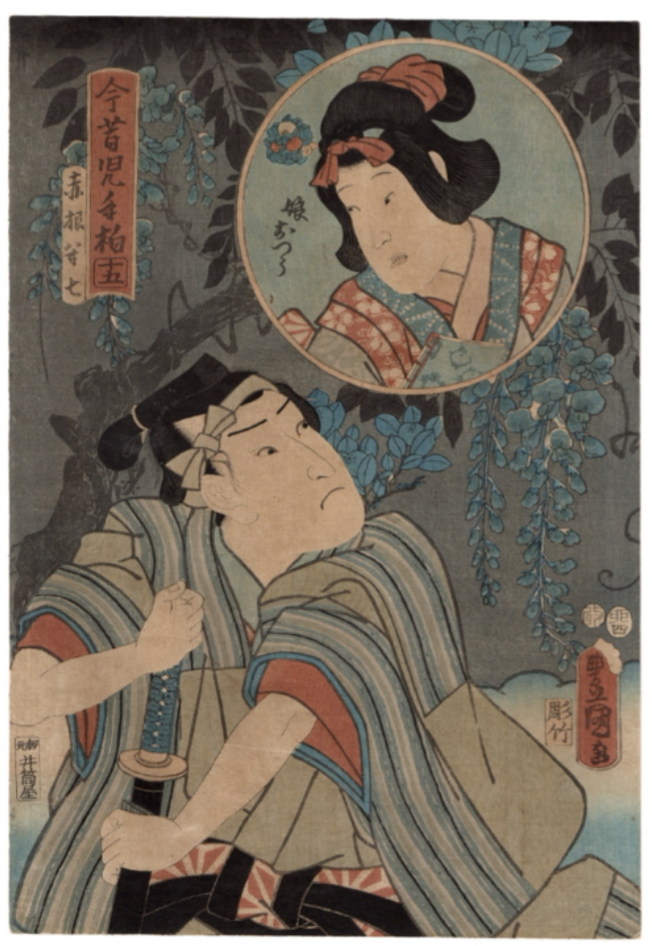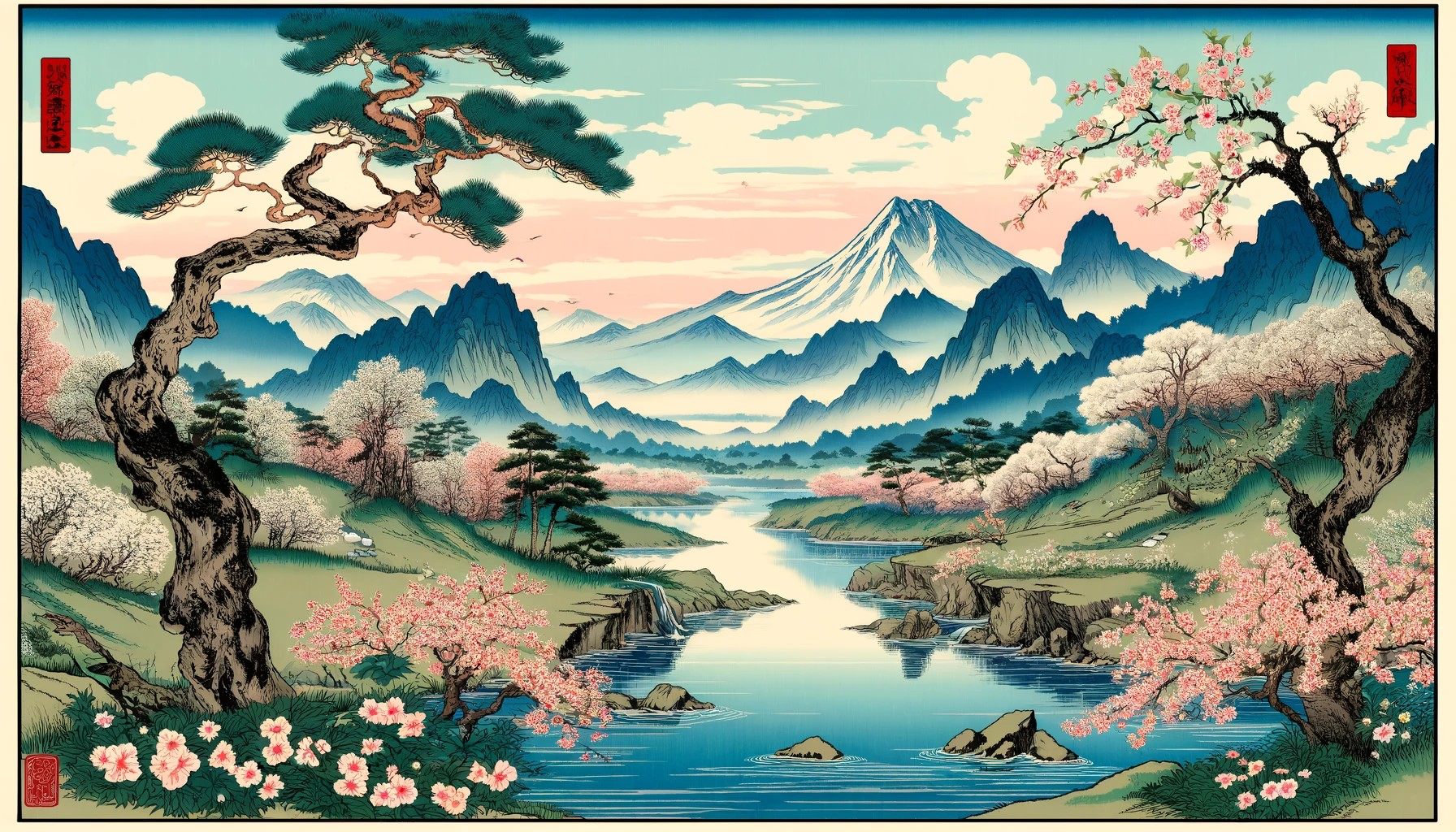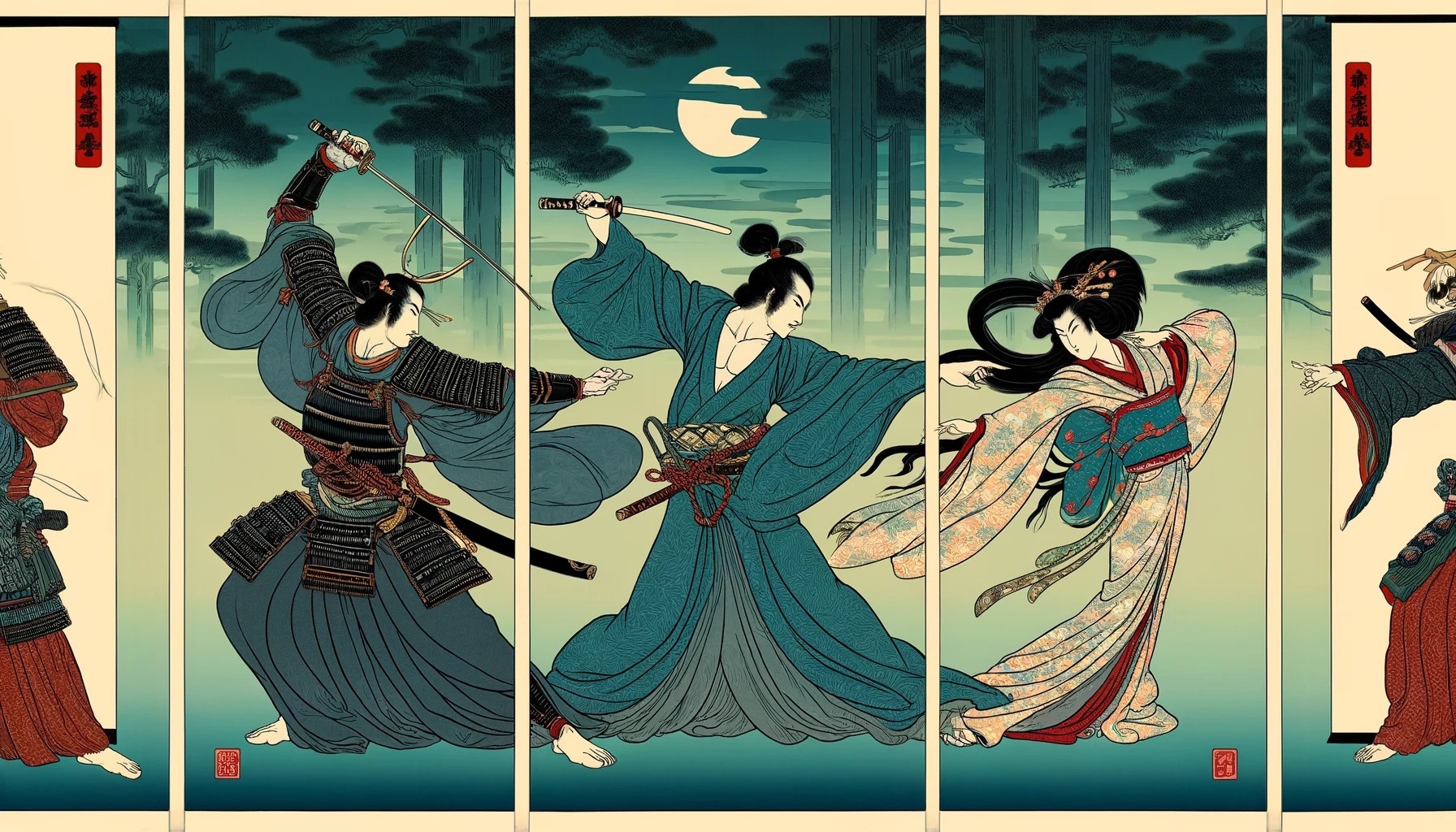
Author: Utagawa Kunisada (歌川国貞) here as Toyokuni (豊国).
Subject:The Kabuki actor Ichimura Uzaemon, (市村 羽左衛門) as Akane Hanshichi (赤根半七).
Series: Young and steady characters from the past and the present (Konjaku konote gashiwa, 今昔児手柏).
Number: 15.
Genre: yakusha-e (役者絵).
Size: large (oban, 大判) 34,4 cm x 24 cm ( 13,54 x 9,45 inches).
Publisher: Izutsuya (井筒屋).
Period: c. 1855.
Trimmed: yes
Backed: yes
Code: UKSI01019
Condition: good condition. Colors are clear and well-defined even though they have lost some of their tone.
There are no heavy folds or noticeable stains. There are no damages or repairs.
Akane Hanshichi (赤根半七) is a historical Japanese character from the Edo period, famous for a dramatic love
story with Sankatsu (三勝), a woman tied to the theater world and the nightlife of Osaka. This tragic narration
of love, honor, and tragedy, set precisely in 1695, has inspired numerous theatrical works in Kabuki and Bunraku,
the Japanese puppet theater.
Hanshichi, the son of a dyer named Hanbei (半兵衛) and initially married to another woman, falls deeply in love with Sankatsu.
From their relationship, even a child is born, but their story is destined to take a tragic turn due to a murder committed by
Hanshichi, pushing them towards a desperate end.
They decide to commit double suicide at the Sen'nyū-ji cemetery in Osaka, tying themselves together with a piece of red silk
cloth and cutting their throats, an event that captured the imagination of the audience of the time and continues to be appreciated
for its deep reflection on universal themes such as fidelity, sacrifice, and guilt.
Their story unfolds through a series of dramatic events that highlight the complexities of human relationships and the inevitable conflict
between social duty and personal desire, culminating in the tragic decision to end their lives in a final act of love and despair.
The figure of Sankatsu, especially in the work En'yō Onna Mai-ginu (艶容女舞衣), has become a popular subject in Japanese culture, revisited
in multiple art forms and considered a classic example of monogatari (tale) linked to personal tragedies within sentimental relationships of
the Edo period. The authors' ability to weave elements of drama into a moving story has ensured this narration a prominent place in the Japanese
theatrical tradition, influencing subsequent representations and vividly reflecting the cultural and social context of the time.


